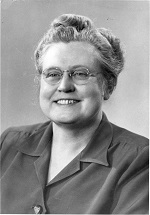 In 1937, Dr. Mae Anderson became the first woman to head a department at Concordia College in a non-traditional subject for women: mathematics. She was also one of the few women in the United States to achieve a doctorate in the subject before 1940. In addition to her scholarly achievements she was active in campus organizations and events. In 1937, Dr. Mae Anderson became the first woman to head a department at Concordia College in a non-traditional subject for women: mathematics. She was also one of the few women in the United States to achieve a doctorate in the subject before 1940. In addition to her scholarly achievements she was active in campus organizations and events.
|
 Martha Brennun was a Norse and math instructor at Concordia, who later worked as registrar. Brennun was the salutatorian of the first collegiate class at Concordia. She also helped establish the first literary society at the college. Martha Brennun was a Norse and math instructor at Concordia, who later worked as registrar. Brennun was the salutatorian of the first collegiate class at Concordia. She also helped establish the first literary society at the college.
|
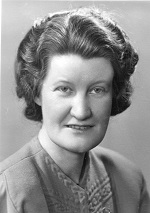 In 1944, Anna Jordahl was appointed head librarian at Concordia College. In this capacity she helped develop the plans for the Carl B. Ylvisaker library, built in 1956, which gave her the space to increase the collection size to over 100,000 volumes before her retirement in 1973. In 1944, Anna Jordahl was appointed head librarian at Concordia College. In this capacity she helped develop the plans for the Carl B. Ylvisaker library, built in 1956, which gave her the space to increase the collection size to over 100,000 volumes before her retirement in 1973.
|
 Norma Gooden Ostby took charge of Concordia’s dramatic program in 1932. Initially the theatre was unsupported by a formal budget or theater season; Ostby described the early productions as a “desperate financial enterprise.” In 1938, Ostby revitalized the artistic community of Concordia College by forming the Concordia Theatre, which provided the school with the organization and budget necessary to hold an annual theater season. Norma Gooden Ostby took charge of Concordia’s dramatic program in 1932. Initially the theatre was unsupported by a formal budget or theater season; Ostby described the early productions as a “desperate financial enterprise.” In 1938, Ostby revitalized the artistic community of Concordia College by forming the Concordia Theatre, which provided the school with the organization and budget necessary to hold an annual theater season.
|
 Emma Norbryhn was a linguistically gifted woman who instructed a variety of language courses at Concordia. During her lengthy teaching career she introduced new language courses and taught Norse, French, Latin, German, and Greek before retiring in 1948. At her retirement she held the title of longest term of service at the college. Today she is among a handful of Concordia faculty to reach the forty year mark. Emma Norbryhn was a linguistically gifted woman who instructed a variety of language courses at Concordia. During her lengthy teaching career she introduced new language courses and taught Norse, French, Latin, German, and Greek before retiring in 1948. At her retirement she held the title of longest term of service at the college. Today she is among a handful of Concordia faculty to reach the forty year mark.
|
Cla ra Duea taught music classes and directed musical groups at Concordia for nearly two decades. In 1927, she established Concordia’s Music Club, which performed and sponsored the first Christmas Concert, a tradition that continues at the college. ra Duea taught music classes and directed musical groups at Concordia for nearly two decades. In 1927, she established Concordia’s Music Club, which performed and sponsored the first Christmas Concert, a tradition that continues at the college.
|
 In 1921, a group of faculty women and wives at Concordia College in Moorhead, Minnesota joined together to form a club devoted to both social activities and to raising money for students in financial need. In the almost seventy years that followed, the Concordia Women’s League formed successful student loan and scholarship funds, contributed to several worthwhile campus projects, and developed a long-lasting legacy. In 1921, a group of faculty women and wives at Concordia College in Moorhead, Minnesota joined together to form a club devoted to both social activities and to raising money for students in financial need. In the almost seventy years that followed, the Concordia Women’s League formed successful student loan and scholarship funds, contributed to several worthwhile campus projects, and developed a long-lasting legacy.
|
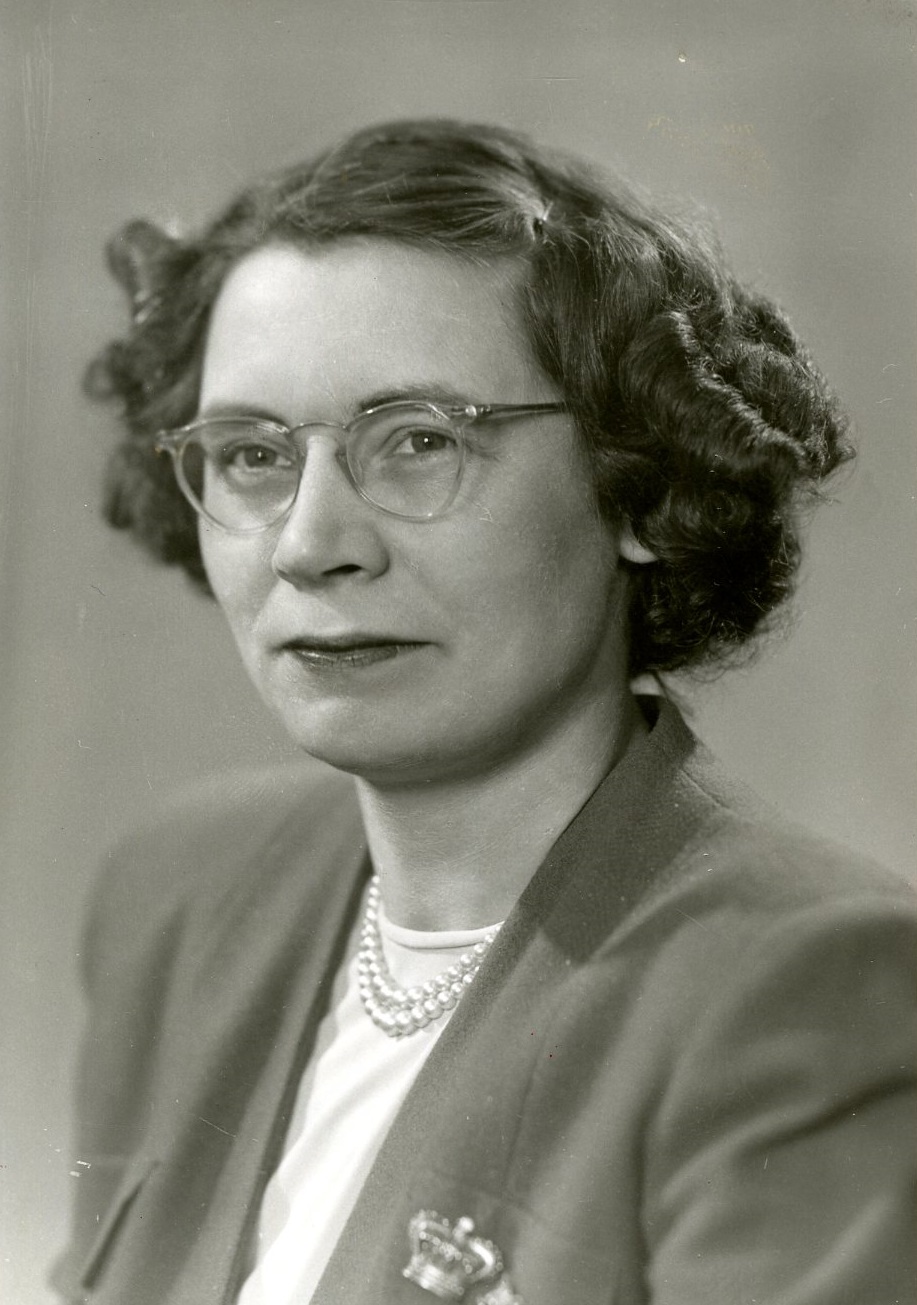 Margaret Nordlie came to Concordia first as a student and then returned to teach classes in library science and work in the library under head librarian Anna Jordahl. In collaboration with Jordahl, Nordlie facilitated the growth of library collections as well as the beginnings of the Concordia College Archives. Margaret Nordlie came to Concordia first as a student and then returned to teach classes in library science and work in the library under head librarian Anna Jordahl. In collaboration with Jordahl, Nordlie facilitated the growth of library collections as well as the beginnings of the Concordia College Archives.
|
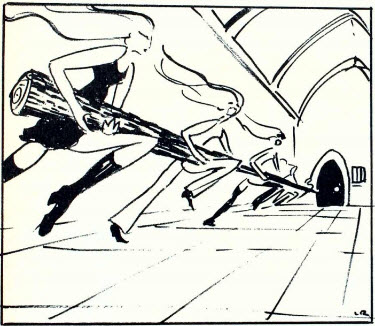 Until the early 1970s, Concordia College imposed restrictive rules and strict regulations pertaining to women’s curfews and lights out. The questioning of authority surrounding the Vietnam War and the feminist movement helped to empower female Cobbers to advocate for their personal freedom. Through a variety of strategies such as demonstrations, lobbying, and expressing opinions in the campus newspaper, women studying at Concordia gained personal freedom and independence when Women’s Hours were eliminated in 1973. Until the early 1970s, Concordia College imposed restrictive rules and strict regulations pertaining to women’s curfews and lights out. The questioning of authority surrounding the Vietnam War and the feminist movement helped to empower female Cobbers to advocate for their personal freedom. Through a variety of strategies such as demonstrations, lobbying, and expressing opinions in the campus newspaper, women studying at Concordia gained personal freedom and independence when Women’s Hours were eliminated in 1973.
|
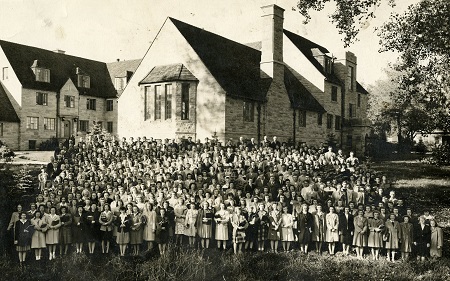 In the midst of World War II Concordia College adapted to wartime restrictions and decreasing enrollment. Due to the military draft the number of male students enrolled dropped, while the number of females attending the college increased dramatically. Accordingly, Concordia established programs and courses that allowed and encouraged women to contribute to the war effort. In the midst of World War II Concordia College adapted to wartime restrictions and decreasing enrollment. Due to the military draft the number of male students enrolled dropped, while the number of females attending the college increased dramatically. Accordingly, Concordia established programs and courses that allowed and encouraged women to contribute to the war effort.
|
 In 1937, Dr. Mae Anderson became the first woman to head a department at Concordia College in a non-traditional subject for women: mathematics. She was also one of the few women in the United States to achieve a doctorate in the subject before 1940. In addition to her scholarly achievements she was active in campus organizations and events.
In 1937, Dr. Mae Anderson became the first woman to head a department at Concordia College in a non-traditional subject for women: mathematics. She was also one of the few women in the United States to achieve a doctorate in the subject before 1940. In addition to her scholarly achievements she was active in campus organizations and events.






